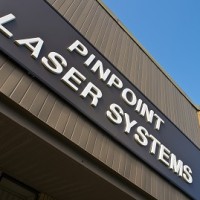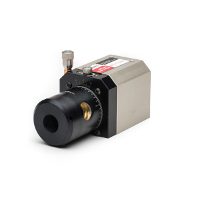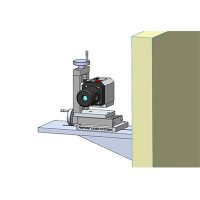Discover the right way to measure gantry systems without wasting time and resources.
Positioning systems are used in manufacturing plants to create household items, move important components, to connect continuous machinery and more. The gantry systems, Cartesian robots to some, are a fascinating unit of automated production lines, since gantry stations control parts of the transfer line that might be used for fabricating, engineering, machining, lifting, positioning, measuring or even filling individual units within the part. Think of the gantry units used to fill food and beverage containers. Thanks to well-aligned indexing conveyors and precision gantry alignment, we get the exact amount of a product specified.
Gantry alignment is helpful in providing reliable assembly line production. An up-to-par gantry machine will reduce transfer line downtime; not just for the one or few sections that could be compromised but for the entire line itself. Assembly lines are expensive for that very reason. Lines are several conjoined units meant to function symbiotically and when just one section falters or stops, so does the manufacturer’s productivity and profits! Have you tried aligning a gantry and arrived at sub-par results? Pinpoint is here to help restore reliability to your gantry system and its critical components.
When aligning or building a gantry system, an alignment laser tool makes life a lot easier and assists your team in making sure master rails and floating rails are in spec. Pinpoint Laser Systems manufactures American made alignment systems that measure precision to the micron and arc seconds. The peace of mind Pinpoint’s laser beams bring to gantry alignment far surpass the low accuracy of dial indicators and even laser interferometers. The alignment systems check for gantry rail flatness, levelness (if necessary), squareness, parallelism and straightness.
Additionally, Pinpoint’s systems emit a laser beam from the transmitter which functions as the reference point, while a receiver (with a receiver sensor for some gantry alignment applications) is moved along the gantry rails. If the rail being measured is out of tolerance, the rail screws or bolts can be tightened or loosened until the perfect straight edge is achieved. The goal is to consistently avoid costly mistakes and production stoppers related to misalignment because displacement that is undetectable to the human eye is easily avoidable with a precision alignment tool.
To find out more about gantry alignment with Pinpoint, visit our gantry kit page or contact our alignment team at (978) 532-8001.
Learn more about the dimensional measurement products used in gantry alignment.


































